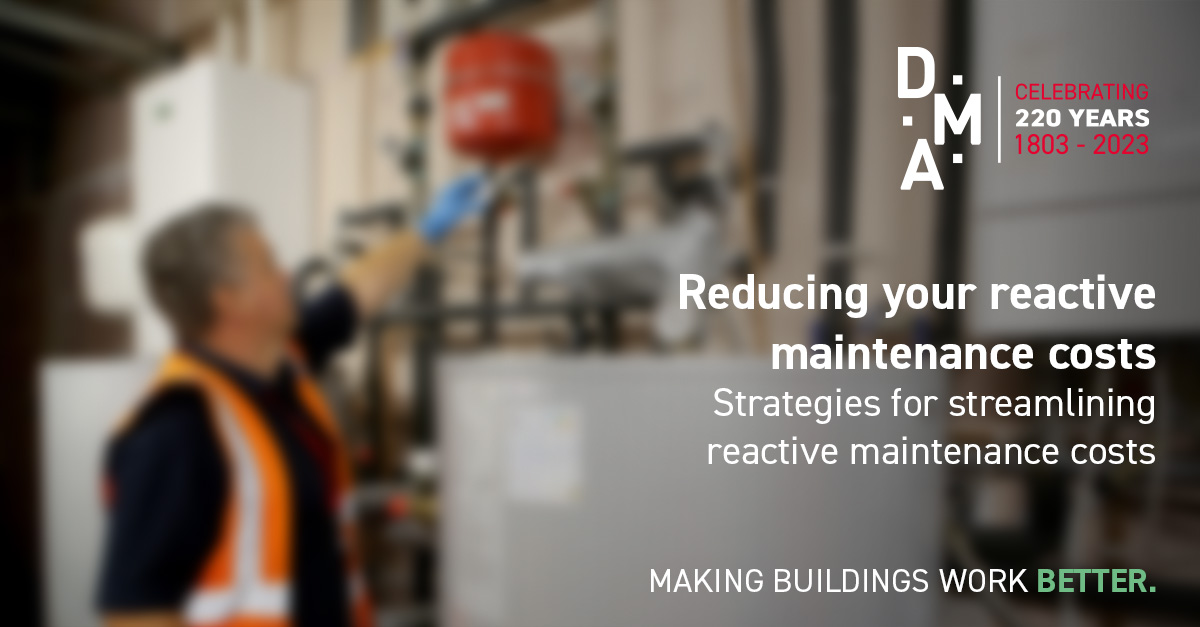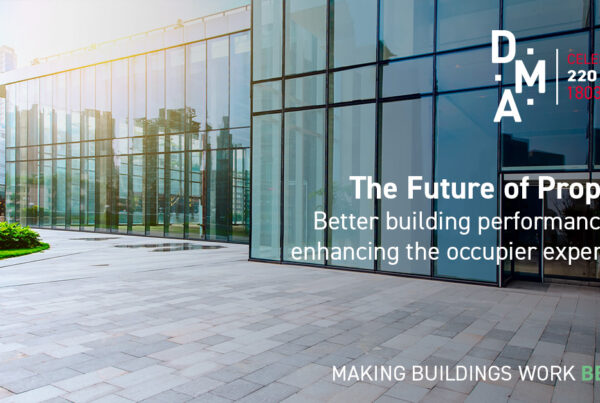
Strategies for reducing reactive maintenance costs, including preventative maintenance, risk-based maintenance, condition-based maintenance, and the use of technology.
In facilities management, reactive maintenance is a necessary but often costly component of building operations. Reactive maintenance refers to unplanned repairs that are necessary to fix broken or damaged building systems or equipment. Reactive maintenance can be expensive, as it often requires urgent attention, specialised contractors, and may lead to additional damage if not addressed promptly. Therefore, finding ways to decrease costs associated with reactive maintenance is critical for building owners and facility managers. In this article, we will explore strategies for reducing reactive maintenance costs, including preventative maintenance, risk-based maintenance, condition-based maintenance, and the use of technology.
Preventative maintenance
Planned Preventative Maintenance (PPM) is completed at regular scheduled intervals to mechanical and electrical equipment to help prevent any unexpected failures in the future. In simple terms, it’s designed to diagnose/ fix problems before it’s too late. PPM tasks also help to prolong the lifespan of a piece of equipment by servicing or replacing components that regularly degrade over time to help protect the rest of the unit. This could be as simple as replacing a drive belt to a motor before it snaps.
Our industry standard guidelines for building maintenance is SFG-20. SFG-20 provides a task list of activities that is performed on a piece of equipment. The task list takes into consideration the frequency and the associated serviceable parts/ components that can affect the performance of the respective equipment. A good example of a simple but effective preventative maintenance task, would be the greasing up a motor bearing. If the bearing runs dry and seizes up, it could result in total damage of the motor, which can end up with a big replacement bill.
The implementation of a well-structured PPM programme will not only ensure statutory compliance, it will also help prolong the equipment’s lifespan, reducing the risk of critical equipment failures and protect reactive budgets. With the rising cost of parts, labour and general materials it is now more important than ever to control and reduce the spend on reactive repairs.
Risk-based maintenance
Risk Based Maintenance (RBM) differs from PPM based maintenance by focusing on the ‘risk level’ that is associated with a particular asset. This means that the assets are assessed based on the likelihood of failure and the severity of the impact should the asset fail. The asset is categorised which will determine their particular maintenance regime. This approach can re-scope your maintenance plan further as it can redirect maintenance efforts from lower risk assets and ensuring critical equipment is attended more frequently. The overall goal of RBM is to minimise the risk to critical or business essential equipment failing and therefore protecting your business from operational downtime and the cost associated.
Every building is different and will rely on certain services to operate. The failure of that service can have severe financial and reputational implications. For example, if a hotel loses hot water, the impact is unthinkable. Not only will it be damaging to its reputation, possibly through online reviews, it will also cost in compensation and can even result in relocation of guests. Therefore, the maintenance strategy for the hot water systems should be risk assed as critical. This could change to a more robust service plan including critical parts on site, with extra resilience and with more frequent maintenance checks.
A well-managed RBM programme should result in less reactive spend on breakdowns as the problems are being dealt with before it’s too late.
Condition-based maintenance
Condition based maintenance (CBM) at its most basic level, is simply looking for signs of small issues before it develops into a large problem. It doesn’t set a rigid service regime as a PPM or RBM programme will produce. Instead, it determines the requirements at the point of assessing an assets condition.
Some of the most common techniques for CBM are vibration analysis, infrared thermography, oil analysis, ultrasonic analysis, and pressure analysis. Some of these techniques do require a level of expertise to operate and can have a front end cost to set up.
An example of a simple condition-based maintenance might be a supply fan unit in a plant room. It will be visually inspected during the engineer’s regular checks, identifying any unusual sounds, smells, vibrations, any signs of overheating etc. If the fan units appear in good order, no maintenance would be carried out. However, if during the next routine check, it’s noticed that an unusual vibration can be felt, it would be time to carry out a maintenance based on its current condition.
Condition-based maintenance can be cost effective as it can reduce the amount of scheduled visits and is only triggered by current condition. It also benefits from reduced downtime of the equipment as it is not subject to a regular full maintenance regime.
Technology in reactive maintenance
Technology is playing a more common role in reactive maintenance. From the use of high-definition cameras to inspect the internal condition of a boiler to using a drone to check condition of equipment at roof level, it is becoming more and more useful and making maintenance activities more efficient. The use of borescopes to check the internal condition of calorfiers for example, has had huge benefit as it not only does the method ensure the same level of inspection, but it also takes far less time and doesn’t cause any operational or building downtime. It also saves on energy and money as it does not require a drain down which can cause the loss of gallons of hot water, replaced with cold water to re-heat.
Technology can also be used effectively as a condition-based maintenance tool. By introducing sensors, leak detection equipment and using imaging devices, it can start to pick up trends and spot abnormalities before a critical failure.
The data that technology can supply maintenance professionals means that building a picture of the performance of certain equipment can also aid in the maintenance strategy decided for that asset. This will result in a more proactive approach to maintenance meaning less time and money spent on repairs and breakdowns.
In conclusion, decreasing reactive maintenance costs is an essential consideration for building owners and facility managers. While reactive maintenance is inevitable, implementing additional and alternative maintenance strategies can significantly reduce the frequency and cost of unplanned repairs. Additionally, leveraging technology solutions such as sensors, analytics software, and building automation systems can help identify issues before they become costly problems. By prioritising these strategies, facilities managers can not only reduce reactive maintenance costs but also improve building performance, increase occupant satisfaction, and ultimately enhance the bottom line.
“Understanding the assets you look after in your building is key to ensuring the right type and the right level of maintenance regime is applied. All buildings are different, the environment the equipment operates in are different, the usage of the equipment if different, and the criticality to a business is different. By developing the right maintenance programme for your assets will result in a longer life span, reduce the risk for critical failure and reduce the amount of reactive spend.” – Rob Ware, Customer Experience Director, DMA Group




